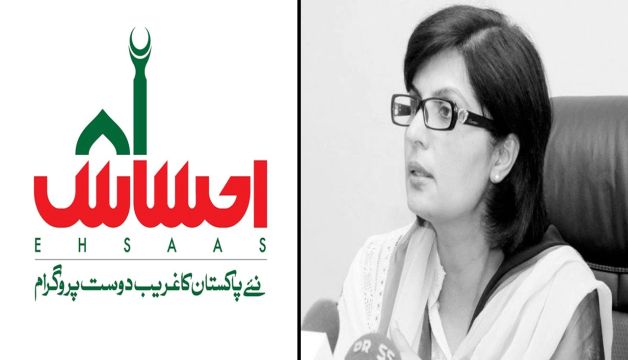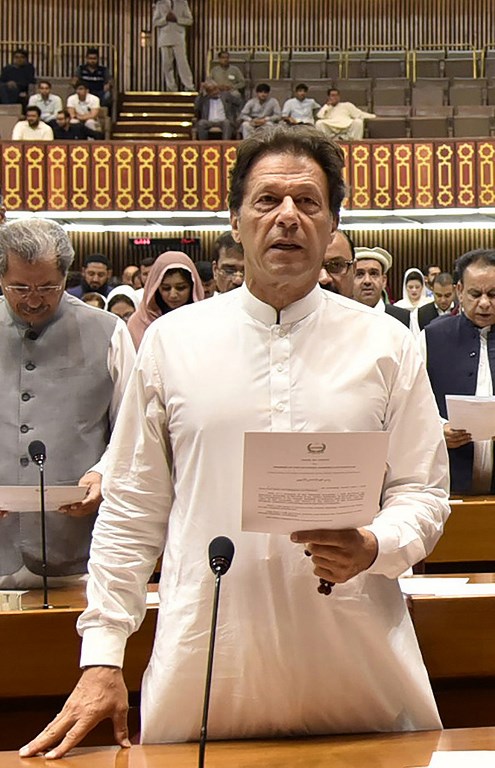The Imran Khan government came into power in 2018 declaring fighting poverty and corruption as their main objectives. To reach this ‘Naya Pakistan’ a new poverty alleviation ‘Ehsaas’ program was launched in March 2019. Dr Sania Nishtar, a public health specialist and seasoned poverty and health care politician, took charge while also taking control of the Benazir Income Support Program (BISP) that needed upgrading.
Initiated by the PPP government in 2008 as an unconditional cash transfer program for women BISP had had a flawed method of identifying women and families through the recommendation of Parliamentarians, who as was to be expected, named mostly their kith and kin, and then the party activists and friends. Some from the bureaucracy joined the ranks of those supposedly “poverty-stricken’. Most beneficiaries did not have a bank account, lived far from the next bank branch and not knowing how to handle the cheque they were receiving, sold it for half the price to someone else. Any successful poverty alleviation program needs a reliable database –a technical problem to be solved with the help of NADRA. To identify the genuine beneficiaries the challenge today is that the last population census-2017 results have still not been officially approved. Moreover the labour force survey 2018-19 of Pakistan Bureau of Statistics (PBS) has not been made public yet. When the population census, labour force survey and NADRA’s data would be synchronised and available, then it would be easier to identify the eligible persons for getting financial benefits. When the ongoing survey is completed the coverage of BISP program will be further expanded and the number of beneficiaries increased manifold.
The upgraded data can be used for other programs as well, for instance for the ration program that was initiated in the wake of the current corona pandemic. The National Socio-Economic Registry (NSER) is underway to collect household data on socio-economic conditions at the grassroots level for future programmatic targeting an ongoing process that keeps updating the information. But other technologies are employed as well. The “Ehsaas Emergency Cash” program identifies the beneficiaries based on an SMS campaign. Designed in the context of the economic hardship being experienced by the vulnerable due to the coronavirus crisis, the financial assistance is meant to help them buy rations so that they don’t go hungry. The program covers 12 million families with a 12,000 per family, total budget of Rs. 144 billion.
After Dr. Sania Nishtar removed 820,165 “undeserving” beneficiaries from the BISP database, as their standard of living was found above the criteria set for ‘the poor’, the Ehsaas program was going much further than only giving unconditional monetary hand-outs. “Kafalat” program reforms the un-conditional cash transfer of the BISP into providing stipends and promoting financial and digital inclusion of women. As many as 29 different programs are listed under “Ehsaas” starting from micro-credits for daily wage workers to online education and garbage rickshaws. Many of the programs are still in their initial stages and the coronavirus crisis has contributed its part to delay things. Nevertheless, the “Ehsaas Program” is on and the Finance Division has proposed Rs200 to Rs215 billion for the Ehsaas Emergency Cash Programme and Benazir Income Support Programme (BISP) in the next fiscal budget 2020-21. The utilisation of funds remained dismally slow in the first eight months in the pre-Covid-19 situation but after the outbreak, the government had diverted these resources through “Ehsaas Emergency Cash Programme”.
Much of the initial success of the Ehsaas Program is because of the sincere dedicated, well-planned and organised work of Dr Nishtar. Given her wide experience in the field of health and planning, the lady is a real asset. Before being appointed Special Assistant on Poverty Alleviation and Social Safety Nets to the Prime Minister in May last year she served as Federal Minister in the Caretaker Government of Prime Minister Mir Hazar Khan Khoso during 2013, in charge of Science and Technology, Education and Training, Information Technology and Telecom.

Dr Sania Nishtar is a physician; graduating from Khyber Medical College with her Bachelor of Medicine and Bachelor of Surgery in 1986, she was the Best Graduate of the Year. She holds a Fellowship of the Royal College of Physicians and a PhD from King’s College London. After several years as a Cardiologist at the Pakistan Institute of Medical Sciences, Sania Nishtar founded “Heartfile” in 1999, which has grown from a health information-focused NGO to a health policy think tank, focused on health systems issues. In 2007, Nishtar founded “Heartfile Health Financing”, a program to protect poor patients from medical impoverishment. During her term as a focal person for health in the Caretaker Government, Nishtar was instrumental in establishing Pakistan’s Ministry of Health, which she had been advocating for. At the conclusion of her term she published Handover Papers a really unusual gift for the next Minister of Health and his staff.
Notwithstanding a wonderful job as the head of the Ehsaas program Dr. Nishtar’s her talents should really be utilised in the healthcare sector. The current pandemic graphically shows how much our healthcare system needs a thorough overhaul. Beyond piecemeal measures, no systematic efforts to overhaul a failed system. Public-private partnerships have been initiated in some districts to fix dilapidated public hospitals. Attempts to introduce government-supported health insurance through the Prime Minister’s National Health Programme in 2016 and the Sehat Sahulat programme of the PTI government have not been consistently implemented. In fact, the present crisis has clearly reached that it was wrong to shift the Health Sector from the Federal overnight to Provincial aegis under the 18th Amendment. This is one of the key things (along with education) that need to be rectified. The “National Health Vision 2016-2025 for Coordinated Priority Actions to Address Challenges of Reproductive, Maternal, Newborn, Child, Adolescent Health and Nutrition” published in 2016 highlights ten points how to create and reform a reproductive health system for Pakistan. A streamlined national health policy implementation and subsequently monitoring. Sania Nishtar has the experience, the stamina and the vision to reorganize and improve the healthcare system of Pakistan, reaching out to all Pakistanis coordination is needed with other sectors such as governance, technology, nutrition, medical education and training and others. After all she was almost elected Director General of World Health Organisation (WHO). In a way we got lucky, she can use her talents within Pakistan to create healthy population is the basis of economic progress and better lives for all of us.

The coronavirus pandemic has been handled quite well in Pakistan despite the abysmal condition that our health care system is in. Dr. Zafar Mirza, Special Assistant to the PM must be given credit for large share in its relative success. Coronavirus will keep all of us busy for a much longer time given that second and third waves of the virus. We will require medication for treatment and vaccination of our population well into the coming years. The current pandemic has taught us that we must be ready for more of the same NDMA has done a good job of organizing relief and logistics of disasters but the medical side, especially of pandemics, cannot be handled by them. Therefore, there is a need to bifurcate medical side of emergencies, whether pandemics, floods or earthquakes, etc. From the organisational side (NDMA). For the necessary fundamental reorganization of the healthcare system of Pakistan, Dr. Sania Nishtar is the right person but at the same time we must have a dedicated professional handling all health emergencies related to pandemics or other disasters Dr. Zafar Mirza must be made a long-term Task Force Czar for this. We need to have the right horses for courses.




